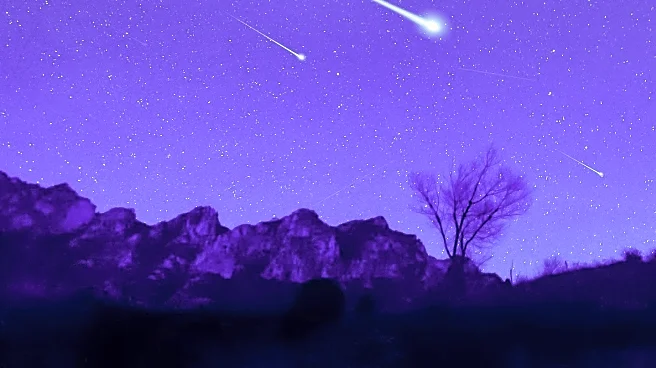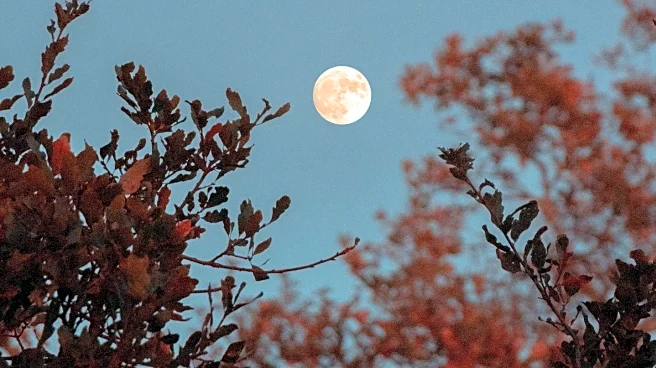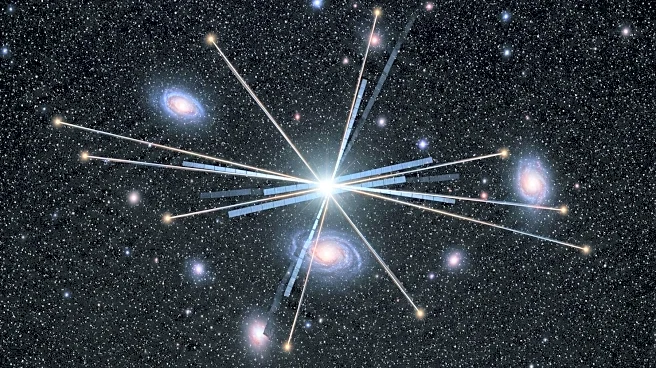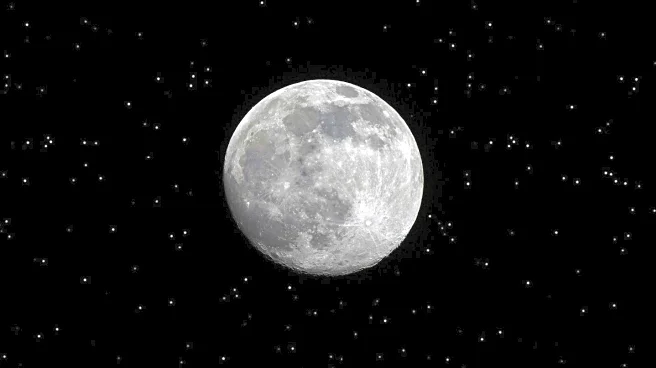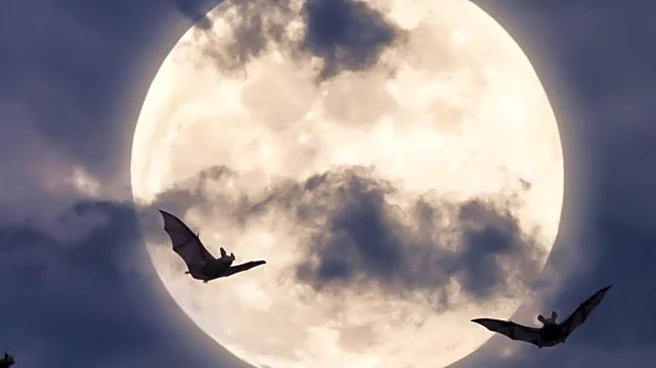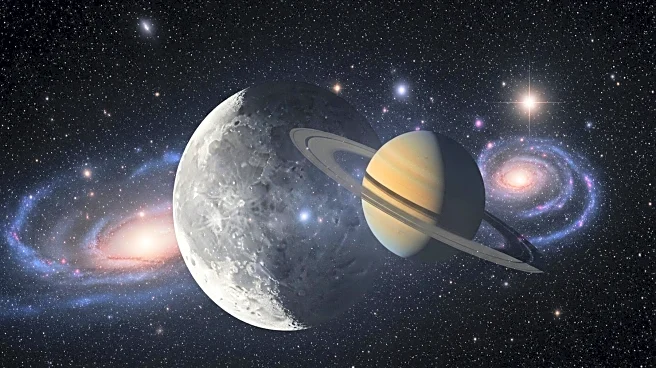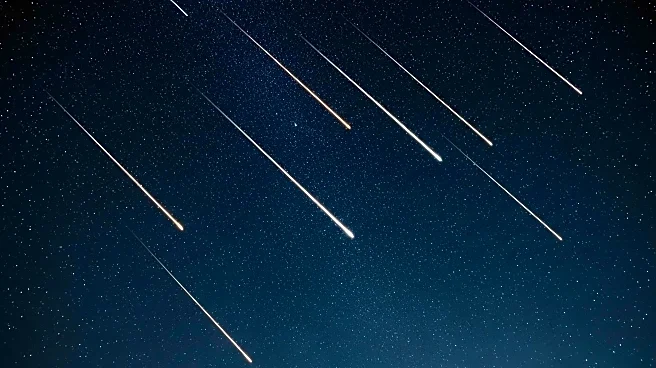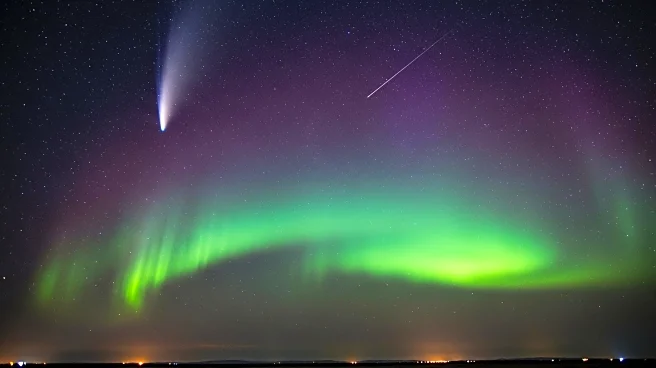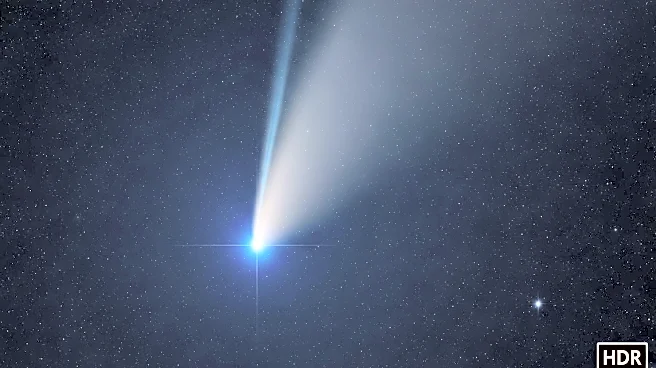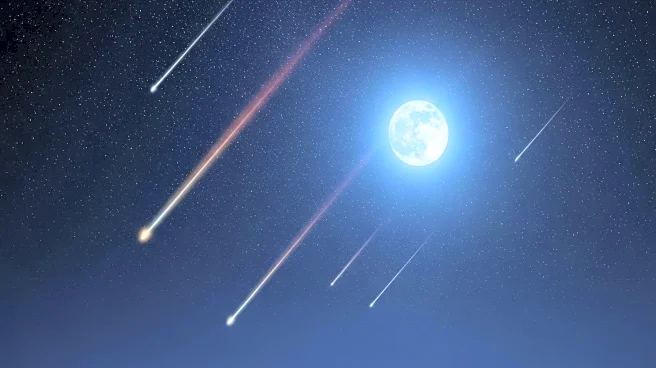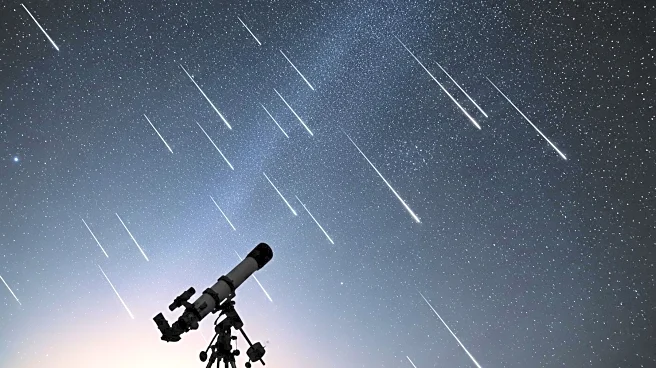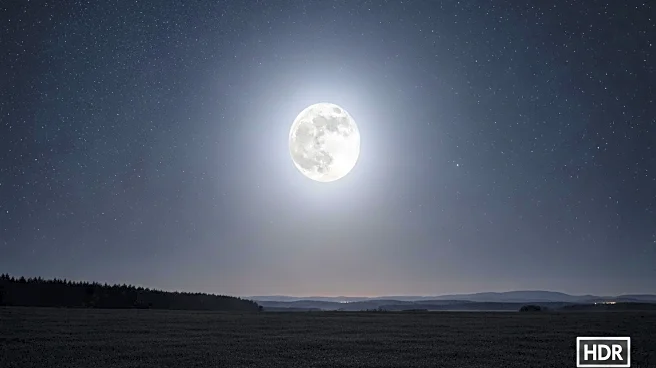What is the story about?
What's Happening?
The Harvest Supermoon is set to illuminate the night sky on October 6-7, 2025. This event marks the first full moon after the autumn equinox, traditionally known as the Harvest Moon, which historically aided farmers in gathering crops by its bright light. In 2025, this full moon is also a supermoon, appearing 10-16% closer and 30% brighter than usual. This phenomenon occurs when the moon is at its perigee, the closest point to Earth in its orbit. The 2025 Harvest Moon is particularly notable as it falls in October, a rare occurrence, with only 18 such instances between 1970 and 2050. The moon will appear orange-gold as it rises, and Saturn will be visible nearby, adding to the spectacle.
Why It's Important?
The 2025 Harvest Supermoon is significant for both its rarity and its visual impact. Such celestial events captivate public interest and provide opportunities for educational outreach in astronomy. The brightness and size of the supermoon make it an ideal subject for amateur astronomers and photographers. Additionally, the timing of the Harvest Moon in October, rather than September, highlights the variability of lunar cycles and their cultural significance. The accompanying meteor showers, the Draconids and Orionids, offer further opportunities for skywatching, although the brightness of the supermoon may overshadow the Draconids.
What's Next?
Skywatchers are encouraged to find a clear eastern horizon to view the Harvest Supermoon as it rises at sunset on October 6. The event will be visible for several nights, allowing multiple opportunities for observation. The Draconid meteor shower peaks on October 8, though its visibility may be reduced by the moon's brightness. Later in the month, the Orionid meteor shower will peak under a new moon, providing a better chance to observe meteors. These events coincide with World Space Week, promoting global interest in astronomy and space exploration.
Beyond the Headlines
The Harvest Supermoon and associated meteor showers underscore the intersection of cultural traditions and scientific observation. The term 'Harvest Moon' originates from agricultural practices, while modern astronomy provides a deeper understanding of these celestial phenomena. The event also highlights the importance of preserving dark skies for astronomical observation, as light pollution can diminish the visibility of such natural spectacles.
AI Generated Content
Do you find this article useful?
